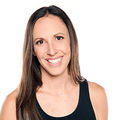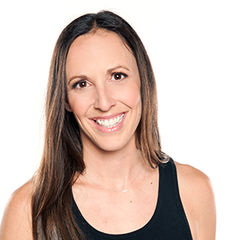Years ago, if you had asked Justin Seedman, ACE Certified Health Coach, Personal Trainer and owner of JustinFit, LLC, if he encouraged his clients to journal their food intake as a way to assess how much they were eating, he would have said “yes.” And that was a great answer, because research shows that people who document what they eat are more successful at losing weight and keeping it off.
Today, however, Seedman, like many other health coaches, has stopped using popular calorie counting apps with his clients. He believes this technique is too time-consuming and tedious. Clients become overwhelmed with having to record every sip and crumb they consume and, while it can be done for a small amount of time, it eventually becomes a source of distress, which ultimately leads to noncompliance.
According to Seedman, issues arise when a client is solely focusing on counting calories using online apps. He saw issues with the databases and the food labels used in the databases.
"Research shows that the actual calories content of what you’re eating is often significantly higher or lower," explains Seedman. “The FDA [Food and Drug Administration] permits inaccuracies of up to 20%. Food journaling based only on counting calories doesn’t take into account the nutrient content of those calories. Many people will choose foods lower in calories, but less nutritious than foods higher in calories that have more nutrients. For example, some people may choose a 100-calorie pack of cookies containing no nutrients over a quarter cup of walnuts that are 180 calories, but packed with nutrients. Plus, it’s difficult for most people to estimate their portion sizes, especially in restaurants.”
Today, Seedman prefers to use tools such as You Ate, which is an app that helps users stay mindful of what they actually eat. They take a quick photo of their meal and simply mark it as “on-path” or “off-path.” You Ate shows what was eaten on a photographic timeline so clients can make mindful decisions going forward. They can add notes and details to see why they made that meal choice and how it made them feel.
In addition to You Ate, Lee Jordan, ACE Certified Health Coach and Behavior Change Specialist, also uses Meal Logger, which is another free, photo-based tracking tool. Jordan specializes in working with clients who want to lose 100 or more pounds. For Jordan, having his clients become self-aware of their habits through pictures is an easy way to help improve their self-efficacy and make them feel like they have a positive, active role in their behavior change.
While taking pictures is meaningful, Lee emphasizes behavior modification. He suggests that many health coaches mistakenly invest their time on “what” people eat, which is primarily the territory of a registered dietician, and miss the bigger area of impact—the behaviors and associated emotions around the “what.”
“An amazing collaborative conversation awaits in this wide-open space around the ‘what’ instead of about the ‘what,’” explains Jordan, “where client and coach can work together to build sustainable change.”
San Diego-based personal trainer and Precision nutrition coach Maggie Rintala believes the simple act of recording food intake can change what her client will eat. However, she does not rush this task.
“There are several habits we practice prior to a food journal,” Rintala explains. “I focus on things they can add to their current routine. Simple habits like eating slowly, stopping at 80% full, using your hands as a measuring tool for macronutrients, etc. This will get the majority of people moving in a positive direction. When they do a food journal, it’s for two weeks. Clients can use a chart I provide for them, a Google document, take photos or use an app.”
Rintala’s clients also track their emotional state before, during and after eating. She’s interested in learning what time they are eating, how long it takes them to eat and with whom are they eating. She evaluates this information and gets them to focus on what is working.
“It’s easy to get bogged down with a ‘todo’ list, which constantly reminds us of all the things we have to do,” suggests Rintala. “One habit that has dramatically increased my happiness quotient is my ‘TA-DA!’ list. Throughout the day, I write down what I am getting done. This habit works great for behavior change because there are things you are already doing that work well for you. When you notice what is working, you will create awareness around your habits. It’s a lot like positive reinforcement with children. And in a lot of ways, we are parenting ourselves when we create new habits, so be a good parent and reward yourself by noticing behaviors that serve you well.”
Leigh-Ann Webster is the founder of 52 Healthy Weeks, an online and phone-based nutritional program. She also waits several weeks to start the food journaling process with her clients.
“After two weeks, I ask them to create a three- to five-day food journal that includes what they ate (they do not need to measure), where they ate (home or restaurant), how they feel in terms of energy and positivity (morning, noon and night), what they drank and how much water they consumed,” Webster explains. “After reviewing their choices, I ask them to journal again the following week, but this time I ask them to focus on the nutritious food they can add into their diet. After that, we begin to hone in on what will work for them and what won't work. My goal is create awareness between food and drinks and movement, energy and brain power.”
If clients are willing and enthusiastic, Webster also encourages them to analyze their sleep patterns, either via apps or a simple pen-and-paper approach. She also asks them to rate their energy on a scale of 1 to 10. She believes that helping clients see the link between what they eat and drink and how they feel physically and mentally is key to positive behavior change.
Clearly, the approach to food journaling is dependent on the goals and needs of each individual client. As a health coach or exercise professional, it’s important to determine which approach to journaling is going to provide the most meaning to the client and bring about the greatest amount of positive behavior change. This happens when you are able to create a non-judgmental, flexible environment that facilities open dialogue between you and your clients.
Expand your knowledge of behavior change with ACE's Health Coach Certification.




 by
by 







 by
by